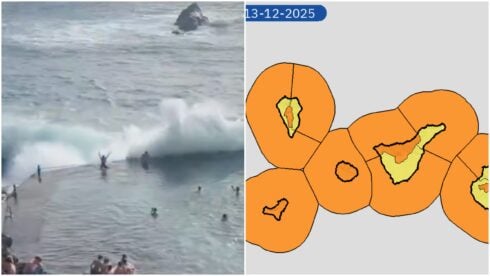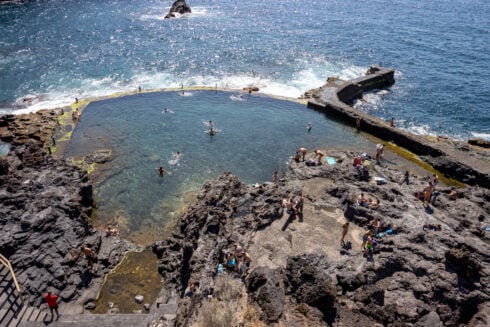A CLOUD of sulphur dioxide from the La Palma volcano is expected to hit mainland Spain on Thursday and may fall in the form of acid rain.
According to the European Space Agency’s Copernicus program, the cloud of sulfur dioxide being expelled from the Cumbre Vieja volcano will arrive in the Peninsula in the next few hours.
It is expected that during the afternoon of Thursday, September 23, part of that cloud will begin to arrive, hitting land on the coast of Murcia and spreading throughout the Peninsula during Friday and until the middle of Saturday.
A prediction that has been echoed by Mark Parrington, Senior Researcher at the Atmospheric Monitoring Service Copernicus, where he posted a video of the direction of the sulfur dioxide cloud on social media.
According to measurements made by the Volcanological Institute of the Canary Islands, the volcanic eruption in Cumbre Vieja, on La Palma, has emitted between 6,140 and 11,500 tons of sulphur dioxide per day.
The simplest form of protection is the correct use of a face mask, although, according to experts, ‘the forecast impact for the peninsula does not correspond to a critical situation.’
Face mask use is, however, highly recommended to prevent respiratory toxicity of sulfur dioxide throughout the island of La Palma, and in the neighbouring islands, such as El Hierro, La Gomera or Tenerife.
The toxic cloud warning comes as the volcano enters a more explosive phase within the main fissure.
Although the volcanic activity has become more intense than in the previous phases, it does not mean that it is dangerous, Carmen Lopez, director of the IGN Geophysical Observatory, has explained.
“More explosions occur because gas is released at a slower rate. That is to say, a smaller amount of gases comes out, but they concentrate and explode because their exit is slower.” Lopez said.
The speed of the lava on its way to the sea has also slowed down, advancing at four metres per hour.
This slowdown has caused experts to predict that the lava may now not reach the sea – instead pooling on land, destroying more homes and farmland.
According to the latest estimates, the area affected by the lava covers 140.44 hectares, with a 600-metre front, forcing more than 6,000 people to be evacuated.
The number of affected buildings stands at around 185, of which 63 are houses. However, the Copernicus satellite system puts the number of buildings affected at 320.
READ MORE:
- ‘The worst thing is not knowing what comes next’: La Palma residents face weeks of uncertainty as lava flow advances from volcano to the sea
- Eruption of volcano on La Palma in Spain’s Canary Islands could continue until Christmas, experts predict
Click here to read more Canary Islands News from The Olive Press.








